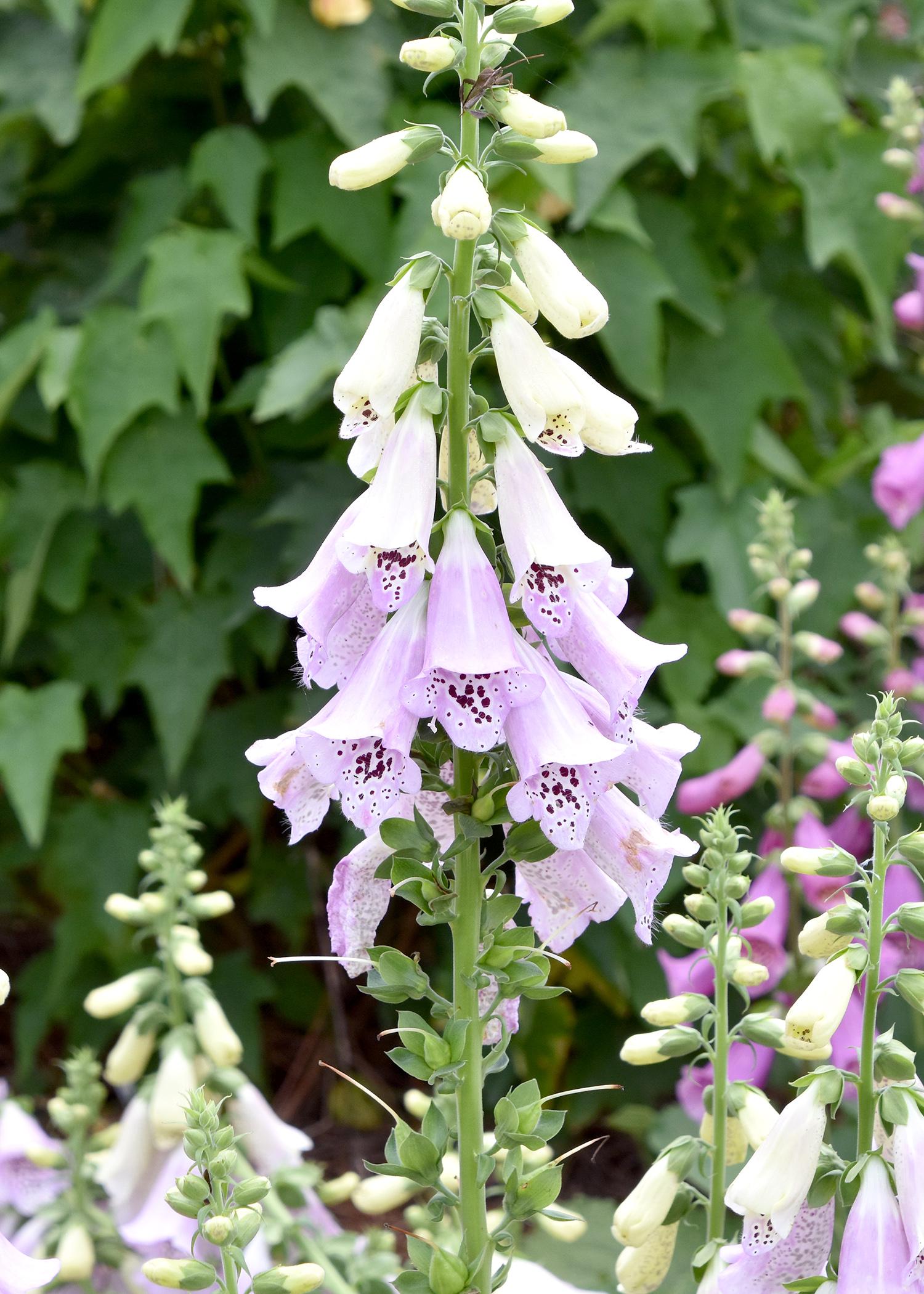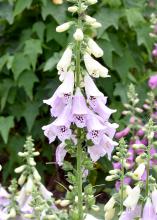Information Possibly Outdated
The information presented on this page was originally released on May 22, 2015. It may not be outdated, but please search our site for more current information. If you plan to quote or reference this information in a publication, please check with the Extension specialist or author before proceeding.
Foxgloves provide dramatic impacts
Foxglove can create a dramatic effect with its tall spires of flowers but is an underused plant in Mississippi, especially in the southern counties.
Foxglove, known botanically as Digitalis, is a member of a somewhat curious group of plants called biennials. These plants typically take two years to complete their lifecycles. After germination, the plants only grow vegetatively (leaves, stems and roots), usually forming a low-growing rosette.
During the second year, after a period of cooler weather, the plants generate tall spikes on which the flowers and seeds are produced. Most home gardeners want plants to bloom the year they are transplanted into the garden. Fortunately, foxglove varieties have been developed that will bloom from seed during the first year.
Camelot foxgloves have turned out to be a good selection for our gardens and landscapes, especially in the southern half of the state. These vigorous plants produce strong branches, which are good for supporting the robust flower spikes. Camelot foxglove is a popular choice because they bloom from seed the first year. This group is also more heat tolerant.
Common recommendations are for foxgloves to be transplanted to the garden during the fall season for flowering the following spring. Camelot plants can be transplanted as late as early March to still enjoy a nice flowering show well into late May through mid-June.
Camelot foxgloves are available in rose, lavender, creamy white and white. Camelot’s flowers are very interesting. Typically, the bell-shaped blooms of foxglove hang down, but the flowers of Camelot are displayed horizontally and allow a better appreciation of the freckled interior of the blossoms.
Foxgloves are classified as flowering perennials, but I consider them to be short-lived perennials. It’s common for foxglove to become perennial through reseeding, though this is not a reliable occurrence in Mississippi. We should consider using them as annuals in Mississippi.
Transplanting young plants in late fall will certainly reward you with spectacular flowers in the spring, as the plants develop a robust root system over the winter months. There is no need to worry about covering these hardy plants during low temperatures.
Transplanting in the spring will produce nice flower spikes. The past couple of years, I’ve noticed that garden centers have been carrying larger containerized foxgloves already in bloom and ready for instant impact in gardens.
Selecting the proper planting site is pretty easy, and, as with other cool-season, flowering plants, you can’t go wrong with full sun exposure. Just make sure the planting bed is well drained and has plenty of organic matter mixed in.









